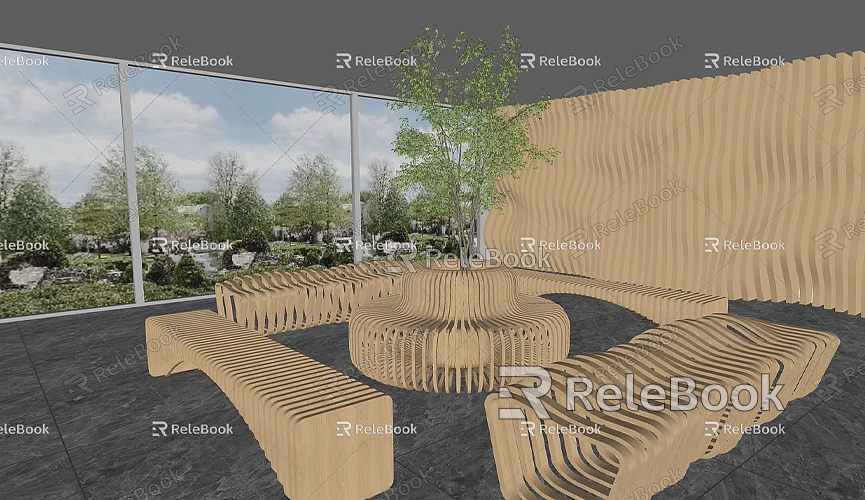How to import rhino model into sketchup
Rhino and SketchUp are two commonly used software tools in the fields of architectural design, industrial design, and 3D modeling. Rhino is known for its powerful surface modeling capabilities, making it suitable for handling complex geometries, while SketchUp is favored by many designers for its simple, intuitive interface and rapid modeling abilities. Sometimes, it’s necessary to import a Rhino model into SketchUp for further processing and design. This article will provide detailed instructions on how to import a Rhino model into SketchUp, helping you successfully convert and optimize your models.

If you need high-quality 3D textures and HDRI while creating models and virtual scenes, you can download them for free from [Relebook](https://textures.relebook.com/). For exquisite 3D models, you can also find a wealth of quality resources at [Relebook](https://3dmodels.relebook.com/).
Exporting the Rhino Model
The first step in importing a Rhino model into SketchUp is to export the model file from Rhino. You can choose from various file formats for export, but the most commonly used formats are .DWG and .OBJ, as they are well-supported in SketchUp.
- Open the model you want to export in Rhino.
- Click on the "File" menu and select "Export."
- In the export dialog that appears, select the file format. To facilitate importing into SketchUp, it’s recommended to choose .DWG (AutoCAD format) or .OBJ format.
- Choose a save location and click the "Save" button. If exporting as .OBJ, you can also set the mesh resolution and detail level as needed.
Once exported successfully, the model file will be saved in the specified location, and you can proceed to import this file into SketchUp.
Importing the Model into SketchUp
After exporting the model file, you can import it into SketchUp for editing and use. The import process may vary slightly depending on the file format, but the overall steps are similar:
- Open SketchUp, click on the "File" menu, and select "Import."
- In the file type dropdown menu, choose the file format that matches your exported Rhino model (e.g., .DWG or .OBJ).
- Browse and select the exported model file, then click "Open."
- SketchUp will automatically load the model. Depending on the complexity of the model, the import process may take some time, especially if the model contains a lot of details.
Once imported successfully, the model will appear in SketchUp’s workspace, allowing you to use various tools to adjust it.
Adjusting and Optimizing the Model

After importing the model, you’ll typically need to make some adjustments to ensure it meets your design requirements. SketchUp offers various tools to help you optimize the model’s appearance and functionality:
- Adjust Scale and Position: Sometimes, the imported model may be the wrong size or in the wrong position. Use SketchUp’s move, rotate, and scale tools to fine-tune the model, ensuring it aligns correctly with other elements in your project.
- Add Materials and Textures: To make the model more realistic and vibrant, you can add materials and textures. SketchUp has a built-in material library, and you can also import custom materials.
- Simplify the Model: If the Rhino model is too complex, it may affect the smoothness of operation in SketchUp. Consider using SketchUp’s plugins or tools to simplify the model and reduce unnecessary details.
Compatibility Considerations Between Rhino and SketchUp
When importing a Rhino model into SketchUp, there are several considerations to keep in mind:
- Surfaces and complex geometries in Rhino may appear distorted or inaccurately converted in SketchUp. To address this, optimize the model’s mesh in Rhino, ensuring each surface is properly subdivided into recognizable polygons.
- If the imported model is too large, it may cause SketchUp to run slowly or freeze. Try to minimize unnecessary details in the model or split the model into several parts for import.
- When exporting files, ensure consistent unit settings. Rhino and SketchUp may have different default units. If you find the model scale is incorrect after importing, it may be a unit setting issue that you can manually adjust during the import process.
Importing a Rhino model into SketchUp is a straightforward process that requires attention to detail. By carefully choosing file formats and export settings, you can smoothly bring complex Rhino models into SketchUp for further editing and presentation. This flexibility in model conversion allows designers to fully leverage the strengths of both software tools, quickly completing the entire design process from concept to execution.
If you need high-quality 3D textures and HDRI while creating models and virtual scenes, you can download them for free from [Relebook](https://textures.relebook.com/). For stunning 3D models, [Relebook](https://3dmodels.relebook.com/) provides a wide range of quality resources that can add more detail and expressiveness to your design projects.

